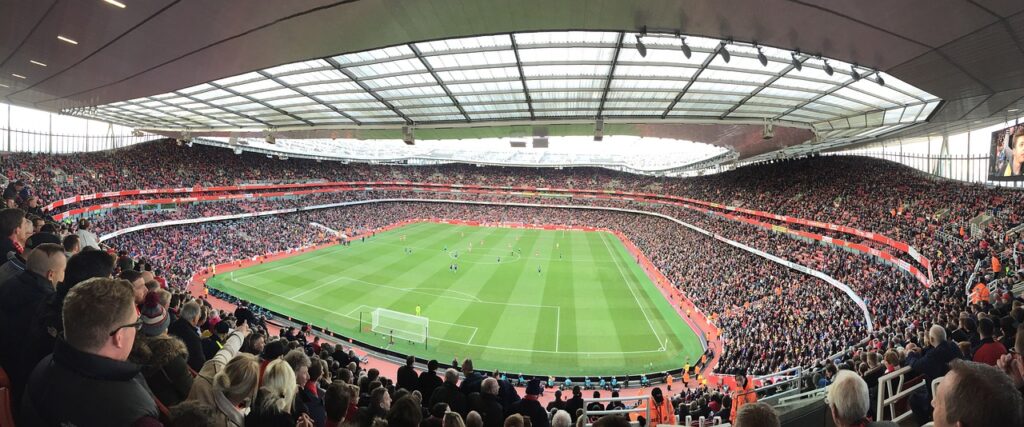
Arsenal are one of the biggest teams in the world today, and it’s not surprising that their stadium should be one of the most recognizable in the country and globally. It’s a grand, impressive stadium, with a storied history and the home of many cup wins and triumphs.
Let’s look at the stadium’s story—where it started, where it is, and where it might be going.
History
After a great deal of refurbishments and remodelling following newly developed regulations for football grounds in the 80s and 90s, these meant that the capacity of their old stadiums was significantly reduced.
In order to address growing debt and lack of attendance, the team were forced to look at their options for building a large stadium in 1997. Many sites were considered over the years, and after much public disagreement and hesitancy, Ashburton Grove was finally approved as the site in 2001.
Construction began with demolition in 2004, and by July 2006, the new stadium was up and running for non-full capacity events. Thus, Emirates Stadium was born. The total cost of the operation, by the end, was around £390 million, and it was designed by Populous.
So how has it been doing since then?
Today
After getting a lot of feedback from supports, in 2009 Arenal began a process to bring the stadium closer to its club’s history. “Arsenalisation” was how it became known.
Many additions have been made to the stadium over the years, such as the statue of legendary striker Dennis Bergkamp in the west stand.
The ground runs north to south, the dugouts being on the west side of the pitch. The waiting list for season tickets has reached as high as 40,000 people in the years since the grounds were completed.
And the ground isn’t only used for football, either. It has been used as a conference centre, and even hosted a summit between the British PM and French President in 2008.
As a music venue, the Emirates Stadium can even be expanded to house as many as 72,000 people.
Where is the stadium headed, then?
Future
Arsenal have been through their fair share of trials and tribulations over the years. But it is fair to say that they are firmly established as one of the best teams in the world today, and their stadium reflects that.
It will most likely continue to expand its facilities, and perhaps expand its capacity, as there have been discussions of implementing safe standing. In any case, Emirates Stadium even as it is today is one of the most modern in the world.
It seems like the future is bright for the club and their home, then. Emirates Stadium is still one of the most attended parks in the country, and Arsenal still one of the most popular clubs. We can only expect that Emirates Stadium will continue to be a beloved home of football for many years to come, both for national fans and the fans from all over the world.
